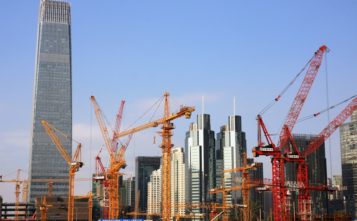The European construction sector was severely affected by the pandemic in April but recovered strongly in most countries in the following months.
According to Eurostat figures in April EU27 construction output slumped by 15% compared to March but made up much of the lost ground in May and June.
The construction sector was hit hardest in April in Italy, down 53%, France, down 43%, and Spain, down 25%. Construction in the UK also fell rapidly in April, down 40%. Although production rebounded in all these countries in the following months, it was still down on the long-term average in July.
In contrast, construction production in the Netherlands, Germany, Poland and Sweden was less affected during the first wave of the pandemic.
On the basis of current data, Euroconstruct predicts that, after expanding 2.7% in 2019 to €1,700 billion, construction output in its 19 European member countries will contract 11.5% (compared to a GDP decline of 8.8%).
This will take revenue down to around €1,500 billion, the lowest level since 2015.
Recovery is expected to set in next year, with output rising 6%, followed by 3% growth in 2022. However, the pandemic over the 2020-22 period is forecast to cost construction around €350 billion in lost business.
Over this year, only Portugal and Poland among Euroconstruct countries are expected to see building sector growth, while the smallest contractions will be in Switzerland and Finland, down 1-2%.
Of the big five, Germany is predicted to fare best, with a 2.5% construction downturn, and the UK worst, with output 33% lower. Building in Spain is forecast to contract 15%, France by 17.8% and Italy 11.4%.
These figures tally with comments from wood industry companies in different countries, although a number gave a more upbeat perspective on the rate of recovery in construction, with government investment programmes expected to give the industry a further boost in various countries.
“In two of our leading construction markets, Germany and the Netherlands, we saw activity continuing quite robustly. There was some slowdown, but few sites closed, and from May onwards demand has picked up steadily,” said an importer.
“In Germany, in particular we see strong prospects for the industry. After a period of under investment, for which it was criticized by the EU and UN, Germany started a multi-billion euro infrastructure and public construction spending programme about two years ago, and that continues. So we’re expecting good growth in the market.” While construction suffered worse in France, public investment is also expected to underpin recovery and growth.
“The French government says its recovery investment package will eventually add up to 4% of GDP, the largest percentage spend of any European country,” said another importer. “It maintains that this should get GDP to preCovid levels by 2022, and €7 billion is earmarked for building renovation and increased energy efficiency.
Additionally, as part of its sustainable development programme, France is introducing a law in 2022 whereby timber will have to make up 50% of construction materials used in new public buildings. In line with this, a significant part of construction for the 2024 Paris Olympics will be in wood.
” The pace of recovery in other European countries was expected to depend on the resources governments have available to boost their economies. “The deeper their pockets, the sooner they’ll get back on track,” said an importer-distributor.
While Euroconstruct forecasts the UK building sector to suffer the steepest downturn of its member countries, bar Ireland where contraction is predicted at 38%, a UK importer also reported good signs of recovery from June through August.
“In fact we had one of our best Julys ever, not just for plywood, but also OSB and the range of wood panel products, and construction contributed significantly to that,” they said.
“Looking forward, the government has also pledged to increase funding for public building projects and the refrain is that we’re going to build back better and greener, which should hopefully open the door to greater use of timber.”
Of other markets, the DIY and repair maintenance and improvement sectors are both reported to have come through the pandemic relatively strongly, and now to be picking up well.
“It seems consumers turned to DIY projects during lockdown,” said an importer. “In addition, the money they’re not spending on holidays and going out is going into home improvement.”








Leave a Reply